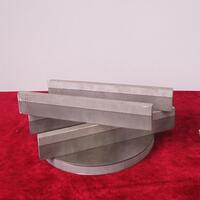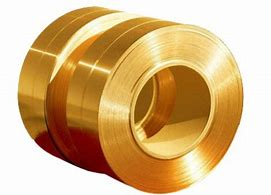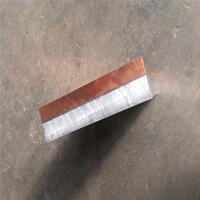1. Introduction
In a significant development reported just 48 hours ago, the global construction materials market is witnessing a surge in demand for sustainable metal cladding solutions, driven by new EU regulations mandating carbon-neutral building envelopes by 2030. This regulatory shift has intensified interest in durable, recyclable, and low-maintenance metal clad systems for both residential and commercial applications. Against this backdrop, understanding the nuances of different metal clad types is critical for architects, engineers, and contractors.

Metal clad—often interchangeably referred to as metalclad—encompasses a broad category of materials where one metal is bonded to another to combine desirable properties such as corrosion resistance, strength, and aesthetics. The term ‘clad metal meaning’ refers to this composite structure, engineered to outperform monolithic metals in specific environments. From metal clad wall panels to metal clad electrical wire, the applications span architecture, infrastructure, and industrial manufacturing.
2. Architectural Metal Cladding Systems
2.1. Corten Steel Facade and Siding
Corten steel facade systems have gained prominence for their weathering properties and rustic aesthetic. Corten steel siding forms a stable rust-like patina that eliminates the need for painting, making it ideal for metal clad houses and artistic installations. However, corten siding cost remains a barrier—typically 20–30% higher than standard galvanized steel—due to alloying elements like copper and chromium. Corten steel plate is also heavier, requiring robust structural support.

2.2. Zinc and Copper Cladding
Zinc metal siding and zinc clad roof systems offer longevity exceeding 80 years with minimal maintenance. A zinc clad dormer or standing seam facade using zinc provides a sleek, modern look that evolves gracefully over time. Similarly, copper siding develops a distinctive green patina, prized in high-end metal clad building designs. Both materials are 100% recyclable, aligning with green building standards.
2.3. Aluminum and Steel Cladding Options

Aluminum clad steel and colorbond standing seam systems dominate residential markets due to their lightweight nature and corrosion resistance. Vertical standing seam metal siding, often made from aluminum or galvanized steel, is popular for metal clad sheds and contemporary homes. PAC Clad standing seam roof and PAC Clad coping systems offer pre-finished, durable solutions with extensive color options. Exterior corrugated metal siding—especially corrugated steel facade panels—remains a cost-effective choice for industrial and agricultural metal clad buildings.
3. Industrial and Composite Clad Metals
3.1. Clad Steel and Bimetallic Composites
In industrial contexts, clad steel refers to plates where a corrosion-resistant layer (e.g., stainless steel) is metallurgically bonded to a carbon steel substrate. Aluminum clad stainless steel and stainless clad aluminum are used in heat exchangers and chemical processing equipment. Titanium clad and copper nickel clad variants serve extreme environments like offshore platforms and desalination plants. These alloy clad systems leverage the strength of base metals with the surface performance of noble metals.
3.2. Electrical and Insulation Applications
Metal clad electrical wire—such as aluminum clad steel wire or Cu clad wire—is designed for mechanical protection and grounding in commercial installations. Aluminum clad pipe insulation combines thermal efficiency with vapor barrier properties, commonly used in HVAC systems. Metal clad insulation also appears in high-temperature industrial piping, where stainless steel outer layers protect inner refractory materials.
4. Material Comparison and Selection Criteria
When evaluating metal clad type options, professionals must consider environment, budget, lifespan, and aesthetics. For instance, a steel clad house in a coastal region may benefit more from aluminum or zinc than untreated steel. Corten steel siding cost must be weighed against lifecycle savings from zero maintenance. Meanwhile, clad metals like 2024 T3 clad or 7075 T6 clad aluminum plates are selected in aerospace for their strength-to-weight ratios.
- Corten steel: High initial cost, self-protecting patina, not suitable for runoff-sensitive areas
- Zinc: Moderate cost, excellent longevity, ideal for complex geometries like dormers
- Aluminum: Lightweight, recyclable, prone to denting without proper gauge
- Stainless-clad steel: High performance in corrosive environments, used in boiler plate steel and pressure vessels
5. Emerging Trends and Standards
Recent innovations include PAC Clad HWP (High-Performance Wall Panels) and PAC Clad column covers that integrate thermal breaks and acoustic insulation. The rise of electroless nickel and chromium electroplating techniques has enhanced the durability of metal nameplates and stainless metal sheet components. Additionally, demand for 316 stainless steel plate and Inconel 625 weld overlay systems is growing in chemical and marine industries due to superior chloride resistance.
6. Conclusion
Metal clad systems represent a convergence of engineering ingenuity and architectural expression. Whether specifying a corten steel facade for a museum or selecting aluminum clad stainless steel for a refinery, understanding the clad metal meaning and performance trade-offs is essential. As sustainability regulations tighten and material science advances, metalclad solutions will continue to evolve—offering resilience, beauty, and efficiency across sectors.
Our Website founded on October 17, 2012, is a high-tech enterprise committed to the research and development, production, processing, sales and technical services of ceramic relative materials such as Analyze. Our products includes but not limited to Boron Carbide Ceramic Products, Boron Nitride Ceramic Products, Silicon Carbide Ceramic Products, Silicon Nitride Ceramic Products, Zirconium Dioxide Ceramic Products, etc. If you are interested, please feel free to contact us.
